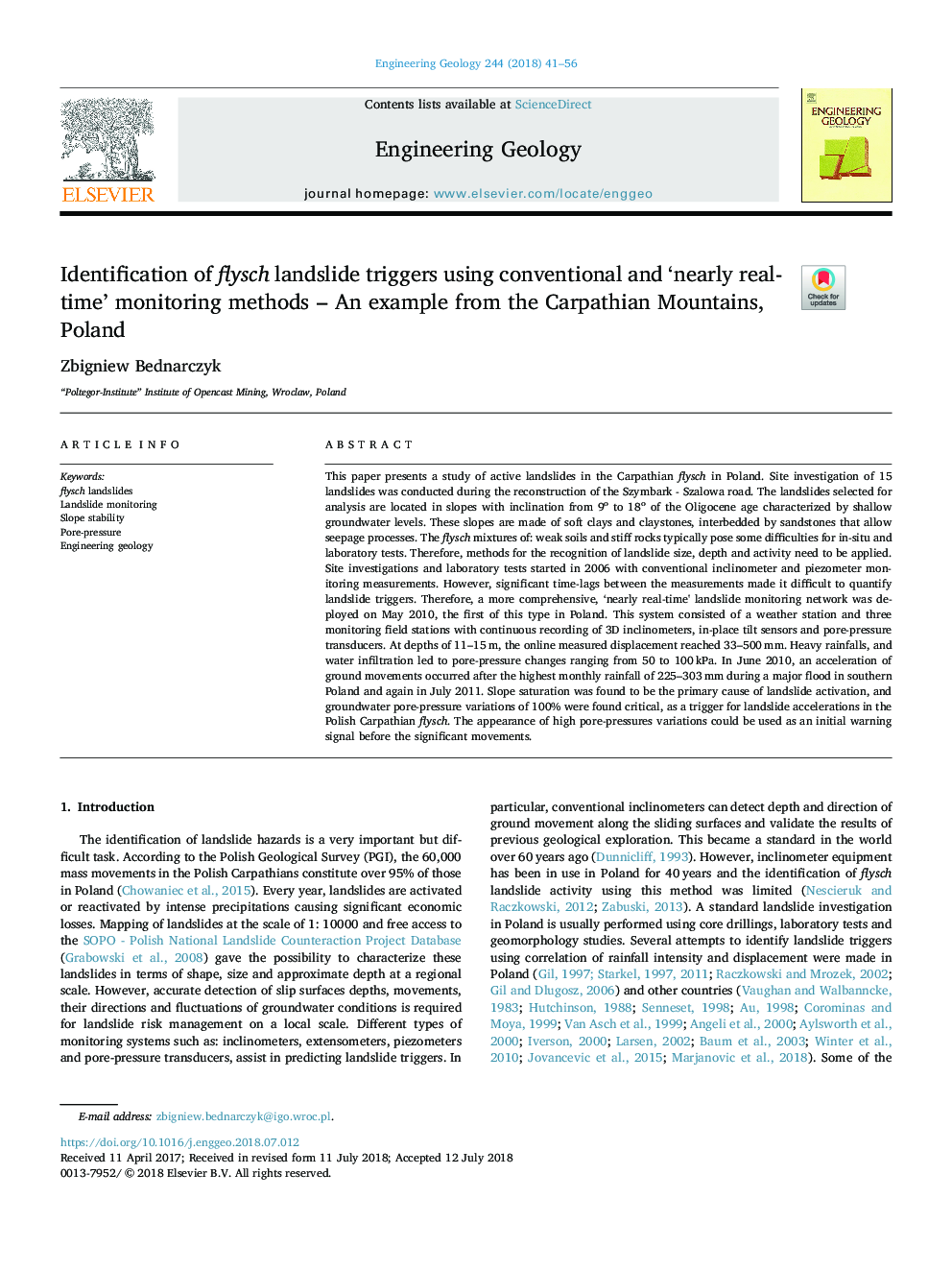| کد مقاله | کد نشریه | سال انتشار | مقاله انگلیسی | نسخه تمام متن |
|---|---|---|---|---|
| 8915778 | 1641741 | 2018 | 16 صفحه PDF | دانلود رایگان |
عنوان انگلیسی مقاله ISI
Identification of flysch landslide triggers using conventional and 'nearly real-time' monitoring methods - An example from the Carpathian Mountains, Poland
ترجمه فارسی عنوان
شناسایی لغزش لغزشی فلیش با استفاده از روشهای نظارتی معمول و نزدیک به زمان واقعی - یک مثال از کوه های کارپات، لهستان
دانلود مقاله + سفارش ترجمه
دانلود مقاله ISI انگلیسی
رایگان برای ایرانیان
کلمات کلیدی
لغزش فیشش، نظارت بر زمین لغزش، پایداری شیب، فشار بخار، زمین شناسی مهندسی،
موضوعات مرتبط
مهندسی و علوم پایه
علوم زمین و سیارات
مهندسی ژئوتکنیک و زمین شناسی مهندسی
چکیده انگلیسی
This paper presents a study of active landslides in the Carpathian flysch in Poland. Site investigation of 15 landslides was conducted during the reconstruction of the Szymbark - Szalowa road. The landslides selected for analysis are located in slopes with inclination from 9o to 18o of the Oligocene age characterized by shallow groundwater levels. These slopes are made of soft clays and claystones, interbedded by sandstones that allow seepage processes. The flysch mixtures of: weak soils and stiff rocks typically pose some difficulties for in-situ and laboratory tests. Therefore, methods for the recognition of landslide size, depth and activity need to be applied. Site investigations and laboratory tests started in 2006 with conventional inclinometer and piezometer monitoring measurements. However, significant time-lags between the measurements made it difficult to quantify landslide triggers. Therefore, a more comprehensive, 'nearly real-time' landslide monitoring network was deployed on May 2010, the first of this type in Poland. This system consisted of a weather station and three monitoring field stations with continuous recording of 3D inclinometers, in-place tilt sensors and pore-pressure transducers. At depths of 11-15â¯m, the online measured displacement reached 33-500â¯mm. Heavy rainfalls, and water infiltration led to pore-pressure changes ranging from 50 to 100â¯kPa. In June 2010, an acceleration of ground movements occurred after the highest monthly rainfall of 225-303â¯mm during a major flood in southern Poland and again in July 2011. Slope saturation was found to be the primary cause of landslide activation, and groundwater pore-pressure variations of 100% were found critical, as a trigger for landslide accelerations in the Polish Carpathian flysch. The appearance of high pore-pressures variations could be used as an initial warning signal before the significant movements.
ناشر
Database: Elsevier - ScienceDirect (ساینس دایرکت)
Journal: Engineering Geology - Volume 244, 3 October 2018, Pages 41-56
Journal: Engineering Geology - Volume 244, 3 October 2018, Pages 41-56
نویسندگان
Zbigniew Bednarczyk,
